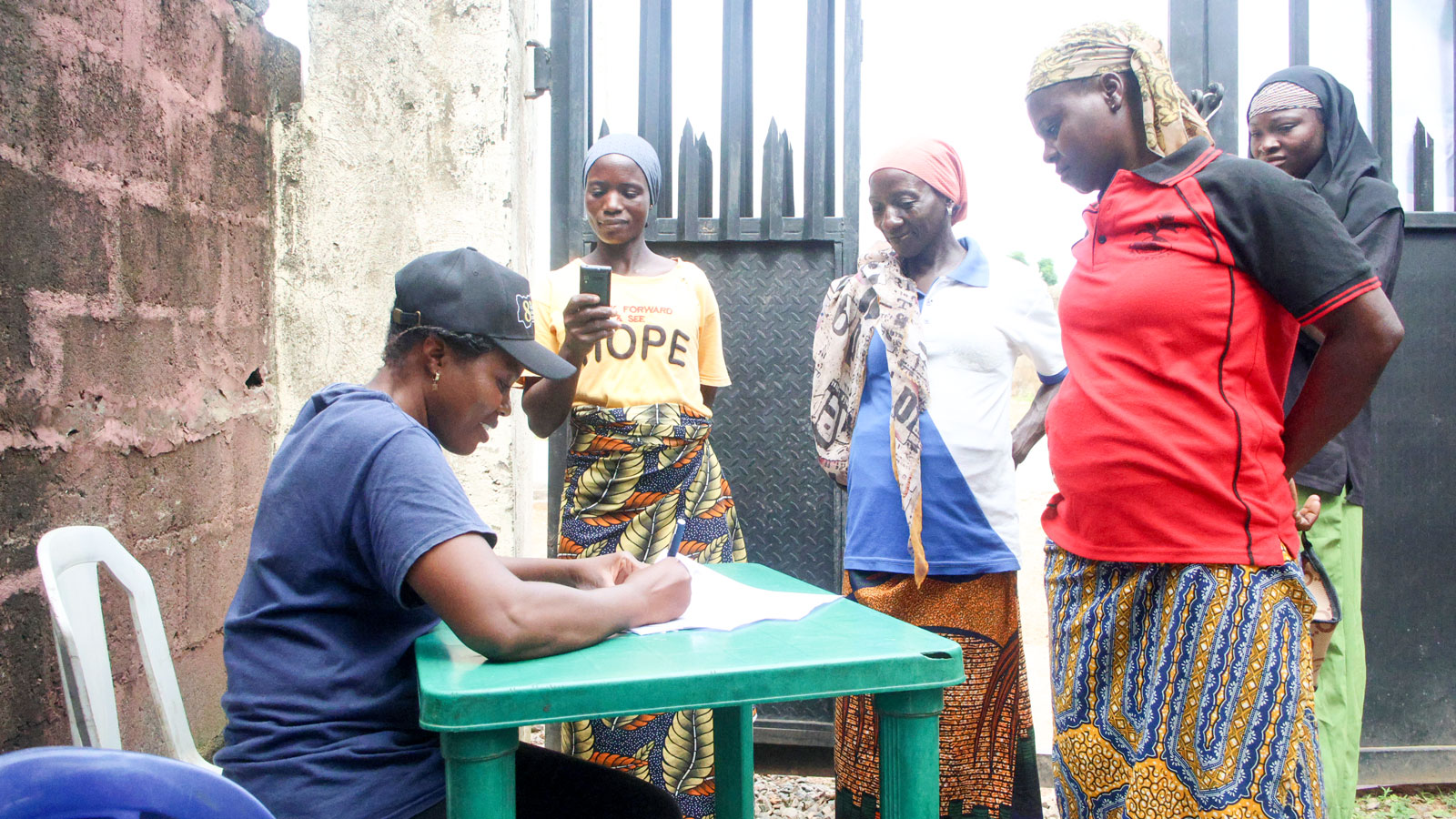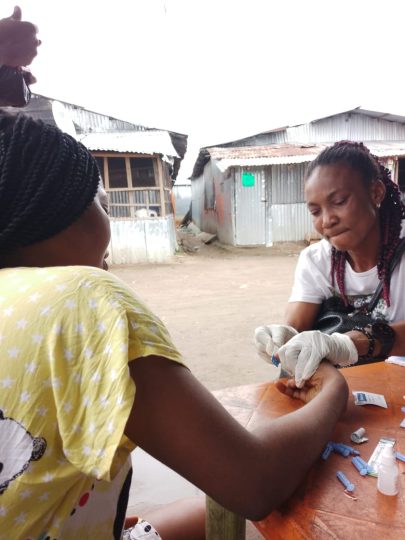Life after PEPFAR
Trump’s aid cuts have gutted HIV programs across Nigeria—forcing local women-led groups to rebuild health and dignity from below.

Image credit Shobana Shankar © 2025.
Since January 2025, the Trump administration’s cuts have fundamentally transformed foreign aid. While the negative impact on health programs was almost immediate, the scale of the damage remains unknown.
Comfort*, a peer leader at Unique Royal Sisters, a Nigerian NGO providing HIV-related services to female sex workers, drug users, and other vulnerable people, helped me see the big picture in the starkest terms: It is now impossible for her clients to get the pre-exposure prophylaxis (PrEP) —they are no longer eligible to receive PrEP because of the aid restrictions. On the open market, the price of PrEP has jumped by 25%. But the problems run much deeper as Comfort explained:
There are high levels of poverty in this country. Most of us women have responsibilities to our families and must work. Though we have education, we can’t get jobs. We don’t have connections. Men demand sex in exchange for jobs. How do we survive but by selling sex?
For Comfort and millions of other women, health and economic survival are inseparable. In this post-USAID moment, the world mustn’t abandon holistic development programs that address disease alongside gender discrimination and poverty.
What aid that is still available is largely focused on health commodities and does not allow for multisectoral approaches of the sort that Comfort wants to see. A recent analysis by KFF, a health policy research organization, found that although the US President’s Plan for AIDS Emergency Relief (PEPFAR) was given a limited waiver in February—only “life-saving” HIV-related activities have been authorized to continue. Testing and PrEP are only allowed for pregnant and breastfeeding women—even programs for orphans and vulnerable children (OVC) have been stopped. In KFF’s survey, almost three-quarters of PEPFAR-funded organizations had cut at least one activity. This narrowed remit will surely set back the wider gains achieved in PEPFAR’s two decades of “spillover effects, including significant reductions in all-cause mortality, increases in childhood immunizations and in GDP growth, and retention of children in school.”
A civil society initiative is currently underway in Nigeria to continue work in the many areas adjacent to health. In July 2025, the development Research and Projects Centre (dRPC)—a Nigerian intermediary non-profit with 32 years of experience of sub-granting and strengthening local civil society organisations supporting vulnerable populations—redirected a portion of its Ford Foundation BUILD grant to make rapid stabilising funds available for local community groups. Choosing projects that could “impact positively on the lives of women and girls,” 17 out of 837 applications received grants of up to five million naira each (about USD3390) to cover work between May and September 2025. The emergency funds went to a wide range of activities: equipping women farmers with fresh high-yield seeds and financial planning advice, teaching girls digital literacy after school to reduce drop out, and providing health and counselling services for female sex workers. Some of these community organizations were sub-grantees of USAID and PEPFAR, while others had other sources.

The Center’s internal analysis of the 837 applications reveals some important insights. First, almost one-quarter of NGO applicants with a history of USAID and USAID-related funding streams conducted HIV-related activities, the most of any program area, followed by 13% of projects involved in humanitarian interventions. These two areas eclipsed other sectors such as non-HIV healthcare, health systems investment, democracy-building, education, gender-based violence prevention, press freedom, and water and sanitation. This distribution shows how disease-centered approaches have shaped the operational landscape of local NGOs in Nigeria. Second, the sample of NGOs without USAID funding worked in more diversified areas, with education being the most dominant theme cutting across digital literacy, teacher capacity training, school retention, and girls’ empowerment. They had less funding, and the aid cuts made things even harder. These Nigerian NGOs, not funded by the US, built their missions in the gaps left by international donor priorities.
The differing emphases among Nigerian NGOs, depending on their funding sources, lend weight to the argument of Catherine Kyobutungi, Ebere Okereke, and Seye Abimbola that aid has often been attuned to donor priorities that tend to benefit their own economies. They argue that “aid should be a catalyst for development, not to run essential care programmes indefinitely in parallel in less functional healthcare systems.” Merely resupplying medical and food commodities should not be the main strategy of development in the coming decades.
Comfort’s perspective points in the direction of investment in women’s empowerment, which is essential to communal survival and life chances. Family Life and Community Health Society (FLACHS), another NSI-funded project in rural central Nigeria, found the same issue when families of OVC impacted by HIV could no longer get food and other necessities that US aid had subsidized. Emergency funds were used to purchase seeds for a local staple crop—cowpeas—to enhance the farms of the vulnerable children’s grandmothers, aunts, and mothers who are caregivers and make up the majority female agricultural workforce in their state. The FLACHS also convened sessions where women farmers met with local government officials to learn what public resources they could access, leading to the formation of a newly recognized rural cooperative association.
The NSI grantees, such as Unique Royal Sisters and FLACHS, are all small women-led and/or female-focused community non-profits delivering services at a limited community scale. Though their resources are limited, these Nigerian development workers are responding to needs from what they see on the ground. They keep the lights on at the “third sector” organizations that make development—an otherwise abstract concept—a reality.



